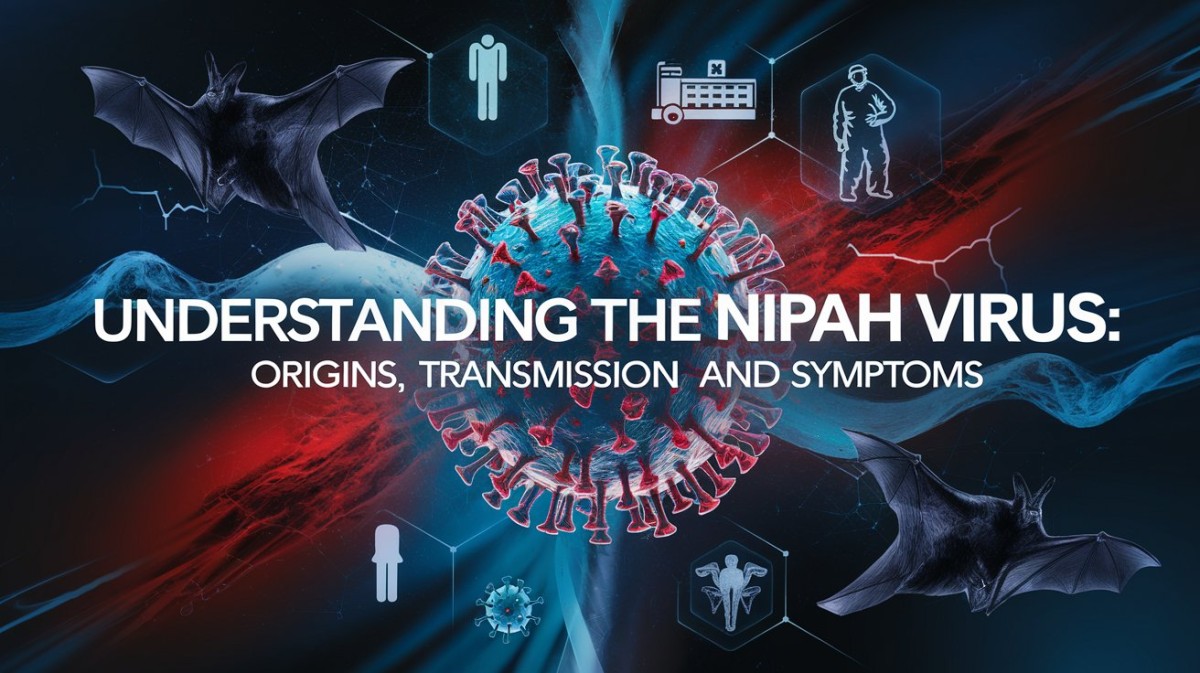The Nipah virus (NiV) is a zoonotic virus that has garnered significant attention due to its high mortality rate and potential for outbreaks. First identified in Malaysia in 1998, this virus has since been linked to severe illness and fatalities in various regions, particularly in South and Southeast Asia.
This blog will provide a comprehensive overview of the Nipah virus, including its origins, transmission methods, and symptoms.
Origins of the Nipah Virus

Nipah virus belongs to the type Paramyxoviridae and is in the same group as the Henipavirus genus. The natural host and the primary source of NiV are fruit bats belonging to genus pteropus that are distributed throughout Asia. The bats of these species do not show any sign of disease but can be host to the virus and spread it to other animals and people. Nipah virus first surfaced in Malaysia causing Nipah virus encephalitis in pig farmers in 1998-1999, and was traced to contact with infected pigs. The epidemic resulted in 276 cases and a mortality rate of about 39 percent; vigorous measures were taken to prevent the spread in the form of mass slaughtering of pigs to minimize the impact that ranged over one million.
After that many such cases have come forward especially in Bangladesh and India. However, in Bangladesh, human transmission is different from Malaysia; most human infections are likely to occur due to consumption of raw date palm sap which is contaminated with saliva or urine of the bat. This mode of transmission stresses the role of realizing local practices in avoiding cases.
Transmission Methods

Nipah virus is transmitted through several pathways:
Bat to Human:
The primary route of transmission is through direct contact with infected bats or their bodily fluids. This can occur through consumption of contaminated food products, such as fruits or date palm sap that have been tainted by bat saliva or urine.
Intermediate Hosts:
Pigs have served as intermediate hosts during outbreaks in Malaysia. Infected pigs can transmit the virus to humans through direct contact or consumption of contaminated meat.
Human to Human:
Person-to-person transmission has been documented, particularly among caregivers and family members of infected individuals. This transmission occurs through close contact with respiratory secretions or bodily fluids from an infected person.
Environmental Contamination:
The virus can persist in environmental surfaces contaminated with bat saliva or urine, posing a risk for indirect transmission.
Understanding these transmission routes is crucial for implementing effective prevention strategies during outbreaks.
Symptoms of Nipah Virus Infection

The clinical presentation of Nipah virus infection can vary significantly among individuals. Symptoms typically appear 5 to 14 days after exposure and can range from mild to severe:
Initial Symptoms:
The infection often begins with nonspecific symptoms such as fever, headache, dizziness, and myalgia (muscle pain). These initial signs can be mistaken for other viral infections.
Neurological Symptoms:
As the disease progresses, patients may develop severe neurological symptoms due to encephalitis (inflammation of the brain). Common neurological manifestations include:
- Altered mental status (confusion or disorientation)
- Seizures
- Coma
- Decreased level of consciousness
- Brainstem dysfunction
Respiratory Symptoms:
In some cases, particularly during outbreaks in Bangladesh, respiratory involvement may be prominent. Patients may experience difficulty breathing and exhibit signs consistent with acute respiratory distress syndrome (ARDS).
Mortality Rate:
The mortality rate associated with Nipah virus infection varies by outbreak but can be alarmingly high, ranging from 40% to 75%. Survivors may experience long-term neurological complications such as memory deficits and personality changes.
Asymptomatic Cases:
Some individuals may remain asymptomatic despite being infected with the virus; however, they can still transmit it to others.
Given the potential severity of Nipah virus infection, early recognition and supportive care are critical components of management.
Conclusion
The Nipah virus is a serious public health menace because of its zoonotic transmission and the high mortality rate. An understanding of where it comes from, how it is passed from person-to-person, as well as the clinical symptoms it presents is important in formulating necessary prevention strategies as well as management of the illness.
Despite the fact that there is still emerging information about this virus, the public health authorities should keep on working to increase the level of people’s awareness about safe practices such as avoiding the consumption of raw date palm sap or dealing with animals in connection with the possible Nipah virus infection.
In conclusion, to date there is no known antiviral remedy for Nipah virus infected individuals: however, supportive care can positively contribute to the medical management of patients. Thus, further scientific work on the treatment of the infection, the development of vaccines and other preventive measures, is important as we continue to fight this lethal virus and prevent new waves of infection in fragile groups of the population.
